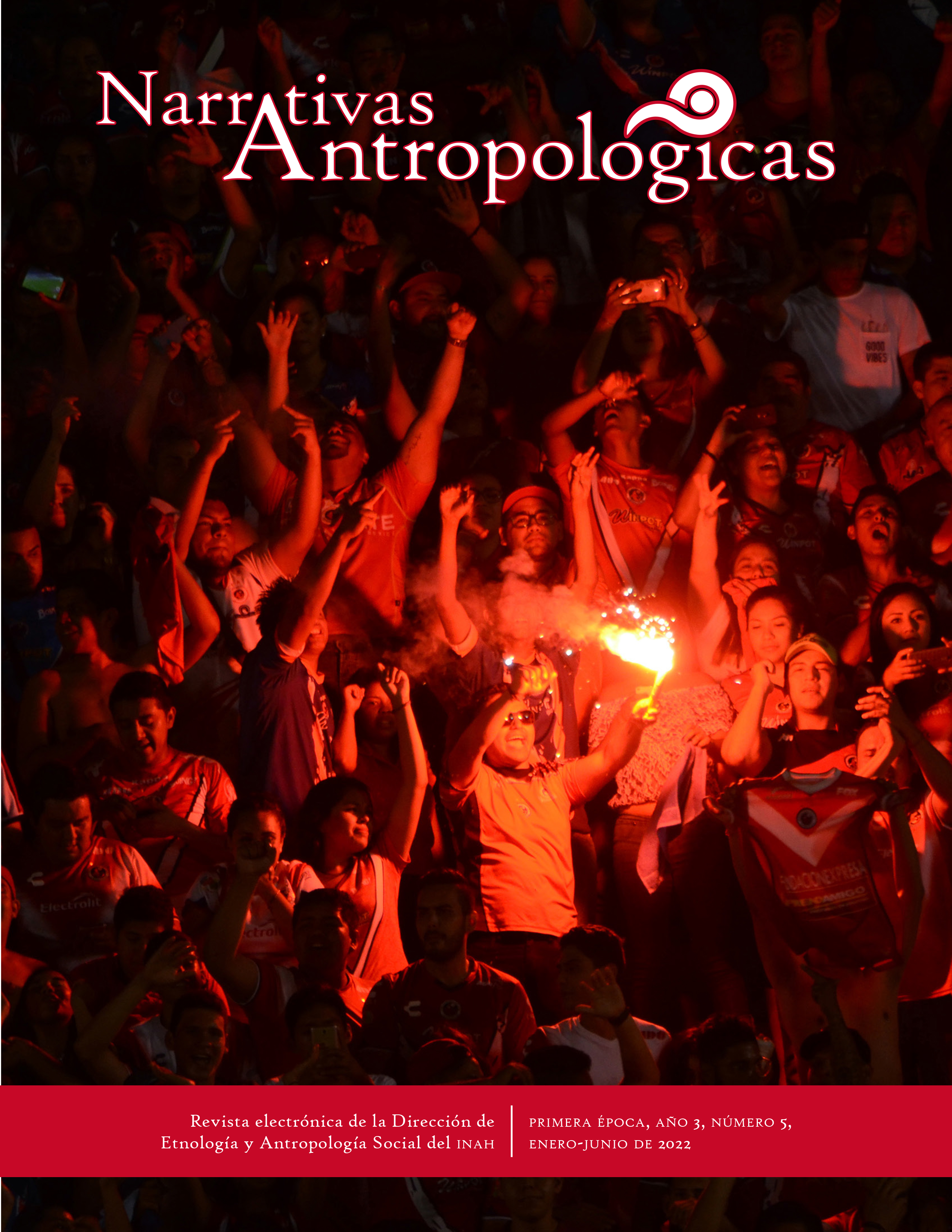Xiksamb najaw tyety ñix, myth and rituality: the relocation of sacred images ikojts in San Dionisio del Mar, Oaxaca
Published 2022-01-19
Keywords
- San Dionisio del Mar, conservation-restoration, ethnography, work with communities, field work, heritage, rituality, COVID -19.
How to Cite
Abstract
During the pandemic year of 2020, the community of San Dionisio del Mar made to the National Institute o Anthropology and History of Mexico (INAH) a request to transfer 16 religious images to a new chapel, due to the restoration work that will be carried out in their Old Temple affected by the earquake that took place on 2017. Faced to this situation a team from the DAIC of the CNCPC-INAH, traveled to this town to work together with the Temple Comitee (Comité delTemplo) for the adecuate manipulation of the religious images. The interdisciplinary work between conservation-restoration and ethnography, contemplates the social bonding of communities with their material and immaterial cultural heritages. This allows us to understand the social and practical dynamics around images, as well as their importance. Especially in this case, the importance that the community gives towards their “Santo Patrón”. The rituality, the myth, the oral tradition, the symbolism and the forms of uses and typical manners of this Oaxacan community, are elements that get inside the game during and after the movement and manipulation of their saints, and have an impact on their ancestral tradition and continue configuration about their own history and community daily life.
Downloads
References
- Sedesol (Secretaría de Desarrollo Social), “Informe anual sobre la situación de pobreza y rezago social” (México: Sedesol, 2017).
- Descola, Philippe, La selva culta: Simbolismo y praxis en la ecología de los Achuar [en línea] (Lima: Institut français d’études andines, 1988) (generado el 27 marzo 2017), acceso el 15 de noviembre de 2021, DOI: 10.4000/ books.ifea.1600.
- Millán Valenzuela, Saúl, “Etnografía de un pueblo del mar”, Diario de Campo: Ritos de paso 2, núm. 56 (2002).
- Beals, Ralph, y Harry Hoijer, “religión”, en Mito, rito, símbolo: lecturas antropológicas, recop. de Fernando Botero y Lourdes Endara (Quito: Instituto de Antropología Aplicada, 2000).
- Neurath, Johannes, Someter a los dioses, dudar de las imágenes. Enfoques relacionales en el estudio del arte ritual amerindio (Buenos Aires: Sb Editorial, 2020).
- Latour, Bruno, Nunca fuimos modernos: ensayo de antropología simétrica. (Buenos Aires: Siglo XXI, 2007).
- Rivadeyra, Pedro de, Flos Sanctorum, ó libro de la vida de los santos, 3a parte (Barcelona: Vicente Surià, 1688), acceso el 135 de noviembre de 2021, https://books.google.com.mx/books?id=iL9QAAAAcAAJ&printsec=frontcover&dq=FLOS+SANCTORUM&-hl=es&sa=X&ved=2ahUKEwihiuD28ZTuAhVCMawKHTPXBfIQ6AEwA-HoECAMQAg#v=onepage&q=FLOS%20SANCTORUM&f=false.
- Eliade, Mircea, “La estructura de los mitos: la importancia del mito vivo”, en Mito, rito, símbolo: lecturas antroplógicas, recop. de Fernando Botero y Lourdes Endara (Quito: Instituto de Antropología Aplicada, 2000).
- Lévi-Strauss, Claude, Antropología estructural (Barcelona: Paidós, 1987), 211-227.

